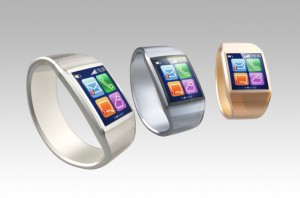Editor’s note: Eddie Hold is vice president, NPD Connected Intelligence, part of The NPD Group, a Port Washington, N.Y., research firm. This is an edited version of a post that originally appeared here under the title “Distributing the wearable future.”
 The wearable technology market is at the beginning of what could be a long and stunning bout of innovation, with the potential to overshadow the smartphone’s accession. But before the OEMs start popping champagne corks, let’s focus on the “could” part of the above sentence. While wearables have created a strong level of buzz, many of the upcoming products are already looking awfully familiar and repetitious.
The wearable technology market is at the beginning of what could be a long and stunning bout of innovation, with the potential to overshadow the smartphone’s accession. But before the OEMs start popping champagne corks, let’s focus on the “could” part of the above sentence. While wearables have created a strong level of buzz, many of the upcoming products are already looking awfully familiar and repetitious.
To be clear, the vast majority of upcoming wearable devices fit in one of three categories: fitness/health devices, smart watches and glasses. The former category is driving most of the current success, with a couple of key brands leading the charge and a myriad similar devices soon to enter the market. Is there room for them all? Probably not, despite the fact that many of us have a fascination with counting steps and calories. But the good news is that we all seem to understand why we would wear a fitness band, if only to demonstrate to the world in general that we care about ourselves.
By contrast, consumers are still unsure why they need a smart watch and the OEMs are also struggling to find a compelling use case. And as for the glass category, well, that is several years away from being a reality for the majority of consumers.
A key part of the problem is that consumers and OEMs are not thinking on a grand enough scale. Initial “man in the street” interviews conducted by NPD prior to this year’s Consumer Electronics Show highlighted this fact: a key application cited by consumers was being able to use the smartwatch to tell the time. Seriously? We’ve all become so accustomed to using the smartphone as the default clock that a wrist-based device that pairs to the smartphone and supports a clock app is seen as compelling. But even discounting this initial use case, the next few examples, such as checking e-mail and making calls, highlight the issue that the smartwatch is seen as a peripheral smartphone device, or as a somewhat clever second screen for today’s second screen (the smartphone).
Perhaps the key is that we are all struggling to create the single wearable that meets all of our needs – just as the smartphone managed to become the Swiss Army knife of communications (and more) several years ago. This is a mistake: the true power of the “wearable” future is a transition from a unitary world – carrying one smartphone that attempts to be a source of all data – to a distributed device future, where these wearables work together to provide a complete picture. In other words, a personal area network that surrounds us, providing a combined sense of the immediate surroundings (whether that is biometric information, air quality or other proximity-based data) and the macro environment, ranging from e-mail, calls and other Web-related data (such as mapping-based information).
One could argue that this is what the initial set of fitness and smartwatch devices attempt to do, adding contextual information through additional wearable devices. But to get to this point, there is a clumsy interface, and the need for consumers to wear additional devices, such as a relatively clunky watch. A far neater example of the wearables potential is the AirWaves mask concept; a face mask that monitors the air quality around the user and shares this data to create a crowd-sourced air monitoring solution for cities. The mask works as a simple solution because the target audience (in this case, people living in Chinese cities) already wear air masks. As such, the new wearable is not an additional device, but rather a new and improved version of what they already have. Nike+ is another early example of a successful wearable, as it fits into the sneaker, enhancing what one already wore, rather than adding a new “thing” to wear.
So where does this leave us? In the near term, we can expect the term “wearable” to be almost synonymous with fitness bands, with a smattering of smart watches thrown into the ring to try and move the market further along. But we will see a small number of vendors to look at expanding the market further to develop more of an ecosystem around their initial products. Take Fitbit, for example, which also makes the Aria Wi-Fi scales. While not a wearable product, the scale is a logical extension of the fitness/health ecosystem that Fitbit has embraced: I want to track steps, calorie burn and the resulting weight loss. Can I do this without a Wi-Fi scale? Sure, but buying the right products makes the tracking process a more natural part of the day. And this, I suspect, is the true key to successful wearables: a seamless fit with our daily life, and how they interact with all the devices around them, not just the smartphone.
